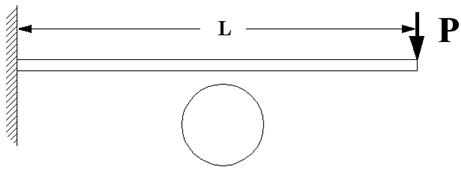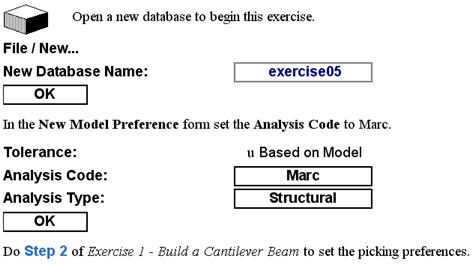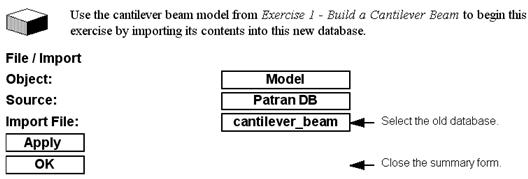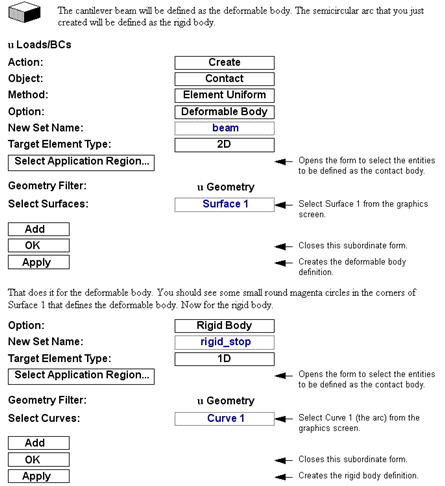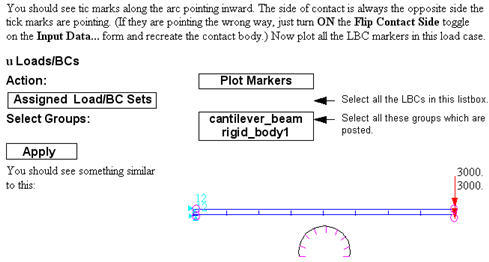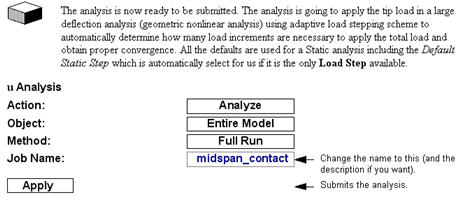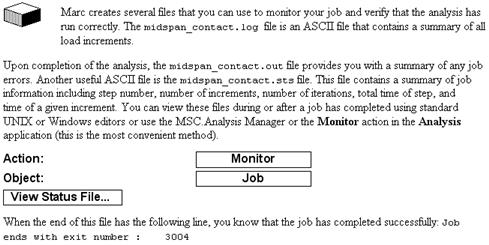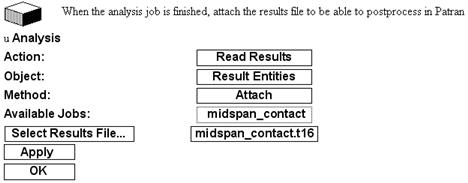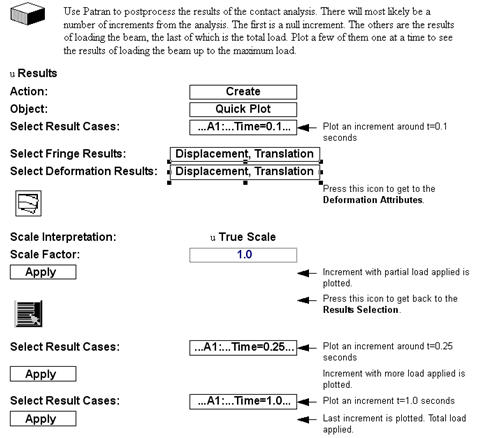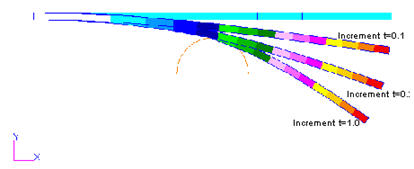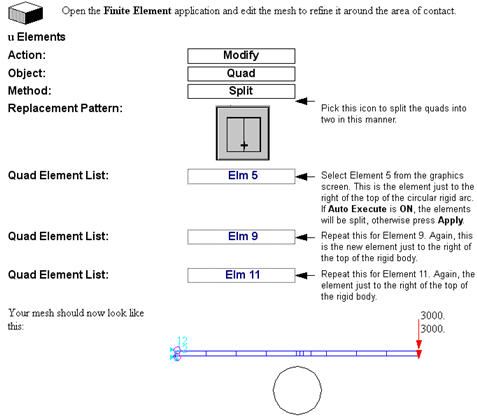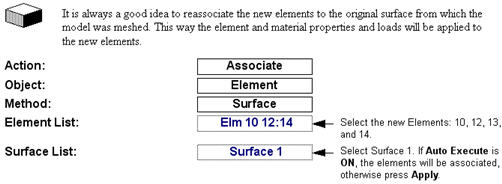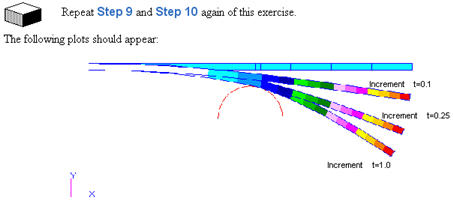XXXXXXXXXXXXXXXXXXXXXXXXXXXXXXXXXXXXXXXXXXXXXXXXXXXXXXXXXXXXXXXXXXXXXXXXXXXXXXXXXXXXXXXXXXXXXXXXXXXXXXXXXXXXXXXXXXXXXXXXXXXXXXXXXXXXXXXXXXXXXXXXXXXXXXXX''"> Exercise 5 - A Simple Contact Problem
In this exercise we will create a simple interference for our cantilever beam to hit as it deflects. One of the many strength of Marc is its ability to solve complex contact problems. But perhaps even more importantly is its ability to easily set up these complex contact problems. Contact is treated as a nonlinear boundary condition. You define which contact bodies are rigid and which are defined as deformable. There is no necessity to define which contact bodies come in contact with which. There is no concept of a contact pair or master/slave definitions. By default all contact bodies can come in contact with each other and with themselves (excluding rigid to rigid of course).
Step 1: Do Exercise 1 - Build a Cantilever Beam
Step 2: Open a New Database
Step 3: Import the Old Database
Step 4: Post the Beam and Interference Geometry
Step 5: Create a Point Load
Step 6: Define the Deformable and Rigid Contact Bodies
Note: | You can define rigid bodies with either Patran geometry or with finite elements. Geometry in the form of NURB curves or surfaces is actually written to the Marc input deck if geometry is selected. If a finite element mesh is selected or if geometry which has a mesh associated to it is selected, then the rigid body is written to the Marc as line segments or patches. |
Step 7: Submit the Analysis
Step 8: Monitor the Analysis
Step 9: Read the Results
Step 10: Postprocess the Results
The following plots should appear:
Note that something does not look right with these plots. It appears as if the beam is penetrating into the rigid body. This is due to the fact that the finite element model of the cantilever beam is too coarse. We need to refine the mesh around the area where contact is made. This can be accomplished in a couple of different ways. Marc has the ability to do local mesh refinement based on a number of criteria such as when nodes come into contact. Automatic mesh refinement and global remeshing capabilities are available under the Translation Parameter form in Adaptive Meshing. If you wish to explore these capabilities, this is left as an optional exercise. For the purposes of this exercise we will manually refine the mesh.
Important: | Clean up the graphics before proceeding. Press the Reset Graphics icon (appears as a broom).  |
Step 11: Manually Refine the Mesh
Step 12: Associate the New Element to Surface 1
Step 13: Detach the Results
Step 14: Resubmit the Results Again
Step 15: Read and Plot the Results Again
Step 16: Additional Challenge
Step 17: Closing/Quitting Patran
